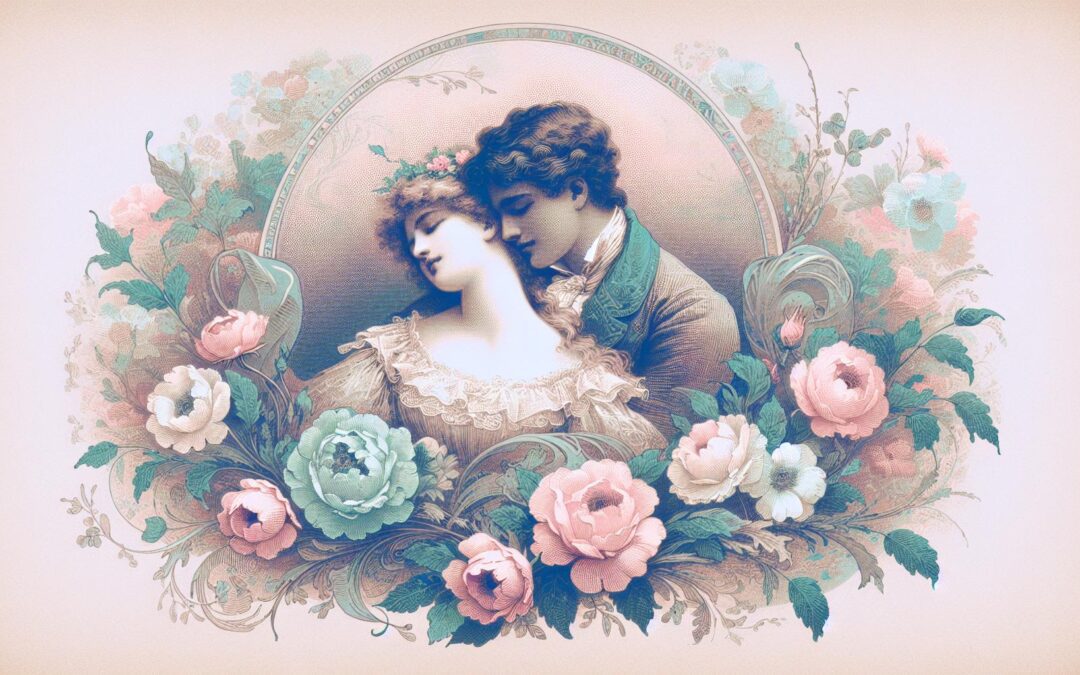Romantic poems for him demonstrate how the poetic address to a male beloved has served as a vibrant thread within literary history. Across eras and cultures, this mode reflects shifting understandings of masculinity, love, intimacy, and longing. A sense of passionate confession emerges in varied forms, from the lyric intensity of Sappho’s fragments to the expansive voice of Walt Whitman. Enduring motifs invite readers into realms where emotional candor and idealization frame romantic connection. To explore this tradition is to witness the transformation of affection into art, as seen in individual poems and within the wide sweep of world literature. Lovers seeking inspiration for their own verses discover a rich lineage behind works like those found at Short Love Poems For Him, demonstrating how genres evolve while retaining themes central to desire.
Historical Roots and Shifts in Romantic Poems for Him
Tracing the earliest traditions, poets embedded passionate addresses to men within the social and mythic frameworks of their times. In ancient Mesopotamia and Egypt, texts express the longing of one person for another with striking clarity, at times featuring male-male dynamics among mythological figures. Greek poetry cultivates this tradition with figures such as Theognis and Anacreon, where affection, admiration, and eros intertwine with ideals of mentorship, martial camaraderie, and citizenship. Sappho stands prominently associated with devotion toward women, yet Catullus and other classical poets dedicate emotionally charged lines to male beloveds, revealing the permeability of genre conventions in antiquity.
Medieval and Renaissance Developments
Medieval poets utilize coded language, spiritual allegory, and courtly gestures to mask or sublimate romantic longing between men. Tournaments of wit and praise unfold in troubadour poetry, reflecting layers of commitment and admiration toward male patrons. The Renaissance then revives and reframes older conventions, as seen in Shakespeare’s Fair Youth sonnets, where idealization is coupled with complex images of time, beauty, and rivalry. Moments of vulnerability surface, yet public expression remains entangled with social constraint. A continuous tension between concealment and revelation informs the emotional register of these poetic addresses.
Romanticism and Modern Transformations
The Romantic era catalyzes greater personalization and psychological exploration within love poetry. Lord Byron and Walt Whitman present male affection as both a source of inspiration and existential challenge. Whitman’s poetry uncovers the possibilities of homosexual attachment by celebrating the physical and emotional resonance of the beloved. This new openness to themes surrounding desire, vulnerability, and companionship influences later poets. In twentieth-century contexts, writers like W.H. Auden and C.P. Cavafy refine the craft of romantic poems for him, interweaving longing, exile, and memory.
Postmodern and Contemporary Contexts
Twentieth- and twenty-first-century poetry distills previous motifs and expands the boundaries of subjectivity. Lyrical directness alternates with ambiguity in works by poets such as Allen Ginsberg and Frank O’Hara, who present desire and partnership with new informality and wit. Social movements demand greater recognition of queer experience, prompting literature to interrogate older models of identity and romance. Poets now frequently experiment with voice, offering perspectives that encompass celebration, critique, and affirmation. Resources including Love Poems For Him From The Heart demonstrate the range of modern approaches, highlighting specificity alongside universality.
Thematic Patterns in Romantic Poems for Him
Romantic poems for him focus on themes that articulate multiple dimensions of masculine affection. These poems may elevate the beloved to heights of imagined perfection or expose the speaker’s fears of inadequacy and isolation. Thematic categories serve not as rigid labels but as ways to organize the emotional architecture of the genre, laying groundwork for ever-evolving expressions of intimacy.
Idealization and Admiration
Poets portray the beloved as the embodiment of virtues, beauty, or soulful radiance. This tendency finds precedent in Petrarch’s sonnets, Shakespeare’s Fair Youth sequence, and later romantic innovators. By transforming character traits or physical attributes into metaphors, poets construct figures worthy of devotion and memory. Connection between the speaker and the beloved is celebrated as an elevation of both participants. A comparison arises with curated selections like Beautiful Love Poem For Him, where the beloved is rendered in glowing terms.
Desire, Separation, and Longing
Yearning forms an essential element of romantic address. Poets chart emotional terrain shaped by distance, loss, or dreams of reunion. In the absence of the beloved, memory and fantasy fill the void, producing moving lines that distill the agony and sweetness of longing. Auden’s war poems and Cavafy’s verses set in Alexandria highlight absence not as emptiness, but as the force that sustains passion and hope. Modern collections such as Heart Touching Love Poems For Him reflect this ongoing fascination with separation and fulfillment.
Vulnerability and Emotional Risk
While earlier poems at times obscure feelings beneath surface formality, many romantic poems for him reveal openness and fear. To confess affection often entails risk of shame, rejection, or exposure. Hart Crane, for example, lets his speakers shed defenses, pleading for reciprocation and acceptance. The poem becomes a space in which the balance between courage and apprehension is negotiated, echoing concerns found in contemporary works at New Love Poems For Him.
Partnership and Commitment
Themes of enduring companionship and mutual support appear across traditions. Some poets depict everyday moments of unity or fidelity, shifting focus from ephemeral passion to shared life. The longing of the unattainable gives way to a portrait of partnership forged by circumstance, forgiveness, or affirmation. Approaches to this motif can be found in examples presented at A Love Poem For Him and similar thematically aligned resources.
Power Dynamics and Social Context
The relationship between poet and addressee is shaped by real and symbolic forms of authority, whether embedded in traditions of mentorship, social rank, or the simple vulnerability of confession. Cavafy’s works dramatize these negotiations, portraying beloveds who occupy positions of both strength and fragility. In times and places where male-male desire confronted social taboo, poets encode affection in ambiguous phrases, often relying on shared cultural cues or references. This complexity underlines the ways romantic poems for him are both personal and reflections of historical pressures, as discussed in studies found at the Poetry Foundation.
Techniques and Formal Qualities
Writers of romantic poems for him distinguish their voices through distinctive images, forms, and approaches to language. The style of poetic address evolves along with shifts in culture and personal expression, offering rich ground for critical inquiry and enjoyment alike.
Symbolism, Imagery, and Metaphor
Recurring motifs—flowers, celestial bodies, rivers—convey evolving meanings through repetition and variation. These symbols allow for both subtlety and boldness, providing concrete anchors for emotion and enhancing the sensory dimensions of the poem. The beloved may shimmer in metaphor, presented as a guiding star, nurturing presence, or source of light. The selection at Cute Love Poem For Him illustrates contemporary uses of imagery rooted in classic traditions.
Structure, Voice, and Perspective
Sonnets and lyric poems have shaped the field by condensing yearning into a tight formal arc, with shifts in tone or perspective often marked by a turn in argument or feeling. Free verse liberates the poet to follow the natural cadence of thought and speech, creating an immediacy that resonates with modern audiences. Changes in voice—from direct address to meditative retrospection—provide fresh vantage points on familiar themes. The resources at Best Love Poem For Him offer a range of formal experiments within these genres.
Contemporary Innovations and Media
Today’s poets draw from diverse traditions and freely remix styles, genres, and cultural allusions. Spoken word performances, multimedia presentations, and social media have amplified the reach and forms of romantic poems for him, encouraging new modes of engagement. Collections such as those at Poetry Society Of America highlight how community and innovation shape the reception and preservation of modern love poetry.

